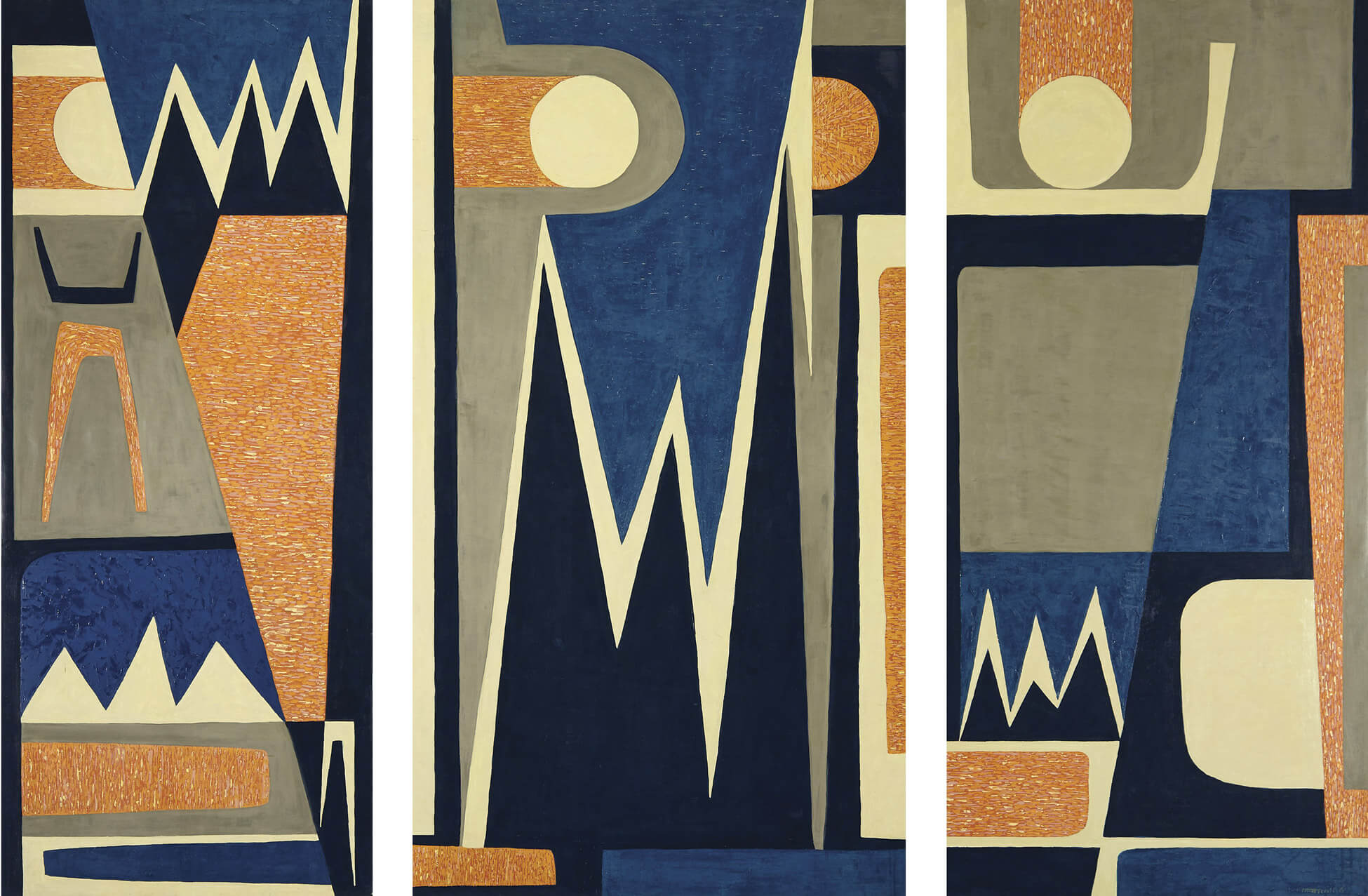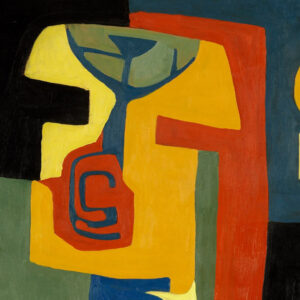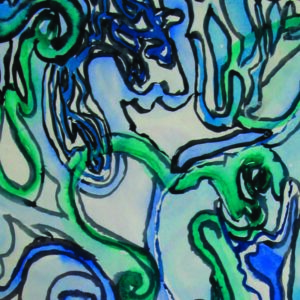Journey to the Mountains: Approach, The Mountains, Return 1968–69

Marion Nicoll, Journey to the Mountains: Approach, The Mountains, Return, 1968–69
Oil on canvas, triptych: Approach, 274.3 x 114.3 cm; The Mountains, 274.3 x 152.4 cm; and Return, 274.3 x 129.5 cm; total: 274.3 x 396.2 cm
Nickle Galleries, University of Calgary
Journey to the Mountains: Approach, The Mountains, Return was a culminating achievement in Marion Nicoll’s artistic practice. It was the first time she used a triptych format at this scale and this strategy enabled her to create her largest painting to date. It contrasts a palette of primary and secondary colours—cool blue and warm orange—interspersed with black, grey, and white. Her use of dynamic jagged geometries placed at various heights throughout teases the viewer’s eye to dance across the three panels.
In 1975, Nicoll’s artist friend Will Barnet (1911–2012) considered it the most successful example of her capacity to “translate physical reality into painting language…[to] search for truths that are the very essence of being alive…to translate her environment in terms of power and beauty.” Almost forty years later, Elizabeth Herbert summarized the painting as “an allegory of Nicoll’s growth into artistic maturity…a modernist’s vision of the self within the panorama of home.”
The monumental triptych had been planned for a client in Edmonton and was the only painting commission Nicoll was ever offered. However, a relationship turned sour and the patron returned it a month after it had been installed in her home, leaving Nicoll both hurt and short of a major sale after three months of full-time work. She finally gifted it to the University of Calgary less than a decade before she passed away.
-
Marion Nicoll, Preliminary sketches from sketchbook, date unknown
Felt pen on paper, 24 x 30.5 cm
Alberta Foundation for the Arts, Edmonton -
Marion Nicoll, Preliminary sketches of Journey to the Mountains, date unknown
Mixed media on paper, 30.5 x 24 cm
Alberta Foundation for the Arts, Edmonton -
Marion Nicoll, Untitled, date unknown
Ink, watercolour, and pencil on paper, 32 x 12 cm
Alberta Foundation for the Arts, Edmonton
Her preliminary drawings for Journey to the Mountains show her care in balancing the flow of movement and light across the three panels by changing their order left to right and adjusting the shapes and forms within them. The project marked two significant shifts in Nicoll’s abstractions—the sheer scale of the work, and her conception of time. She had been working in series for a decade but, until Journey to the Mountains, each painting remained a freestanding object responding to one moment in time and, once sold to various owners, the series could not be experienced again as a totality. She had not considered the triptych format before.
The scale increase made possible by using three panels to form Journey to the Mountains changed her approach to be akin to a colour-field-scale abstraction, wherein the viewer’s field of vision is physically enveloped when standing before the work. The result was significantly more impactful as a simultaneous experience detailing three temporal moments—approaching, arriving, and returning. Journey to the Mountains was a radical departure from the landscapes she had once painted in which a single frame fixed one moment in time.
Throughout her life Nicoll had honed her skills in experiencing the outer world and turning to her inner self to find peace. Journey to the Mountains was an autobiographical summation of her artistic life to and from the mountains after a long feminist journey. It marked the end of her working in a serial format and commenced her exploration of multiple panels to create ever more imposing visual effects. Although it was hurtful at the time, it is fortuitous that Journey to the Mountains found its final home in a public, rather than private, art collection, for it was the most autobiographical work of her lifetime.

 About the Author
About the Author
 More Online Art Books
More Online Art Books
 Acknowledgements
Acknowledgements